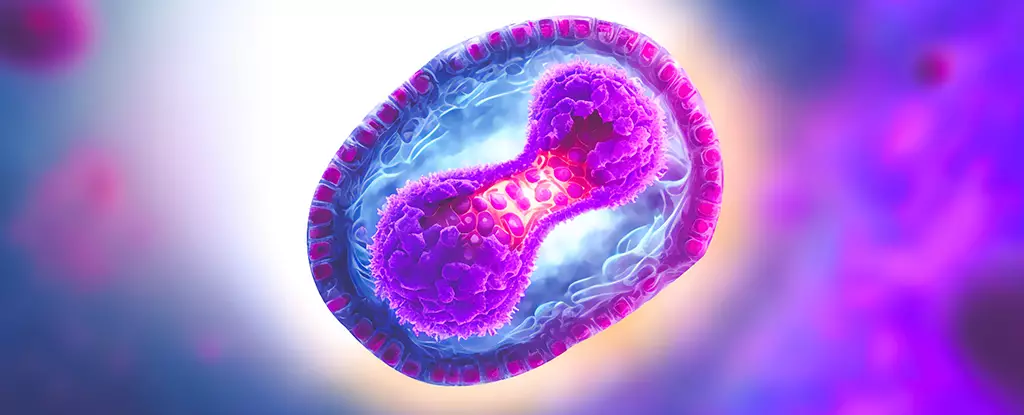The new strain of the mpox virus is spreading rapidly along the eastern border of the Democratic Republic of Congo, causing serious concern for global health authorities. This particular strain has been identified as the most dangerous variant of the virus yet, according to the World Health Organization. It has been observed that the current outbreak of mpox has primarily been driven by sexual transmission, but there is also evidence to suggest that it can be passed on through close skin-to-skin contact. This means that a wider range of individuals are now at risk of contracting the virus, including schoolchildren, healthcare workers, and entire households.
Symptoms of mpox can initially present as vague, including fatigue, aches, fever, headache, respiratory symptoms, and a rash. The distinguishing feature of mpox is the rash, which can be itchy and painful. It quickly develops into fluid-filled blisters that eventually scab over. The fluid within these blisters is highly infectious, making it easy to spread the virus through simple acts like sharing towels or toothbrushes. Some infected individuals may only have a few blisters, making them difficult to detect, while others may have no symptoms at all. Treatment for mpox is primarily supportive through rest, hydration, and pain relief, but severe cases may require hospitalization and treatment with broad spectrum antivirals.
The History and Transmission of mpox
Mpox, previously known as monkeypox, was first identified in laboratory monkeys in Denmark in the 1950s. It was later found to infect humans in the Democratic Republic of Congo in the 1970s, leading to the current outbreak. The virus is transmitted through close physical contact between individuals, including sexual transmission. There are two main branches of the virus, Clade I and Clade II, each associated with different case fatality rates. Clade I has a higher fatality rate of up to 10%, primarily found in the Democratic Republic of Congo, while Clade II has a lower rate of 1% and is more widespread across Western Africa.
The recent surge in mpox cases has raised serious concerns about the lack of preparedness and resources to combat the virus effectively. One major challenge is the absence of a licensed mpox-specific vaccine to prevent infections or specific antiviral drugs to treat severe cases. This gap highlights the urgent need for the development of targeted vaccines and treatment options to curb the spread of mpox. Additionally, there is a crucial need for improved communication from healthcare agencies to educate the public on the modes of transmission, testing protocols, and protection measures for at-risk groups. Destigmatizing mpox and implementing proactive measures, similar to those used during the HIV/AIDS crisis, are essential to controlling the outbreak.
As the mpox virus continues to spread and mutate, the global health community faces the challenge of containing the outbreak and preventing further escalation. Without effective interventions, new variants of the virus could emerge, potentially increasing the ease of transmission and severity of the infection. Surveillance systems monitoring the spread of mpox, along with research into new vaccines and treatments, are crucial in addressing this urgent threat to public health. The history of mpox and its potential to cause severe illness and fatalities underscore the need for immediate action to prevent further devastation.


Leave a Reply